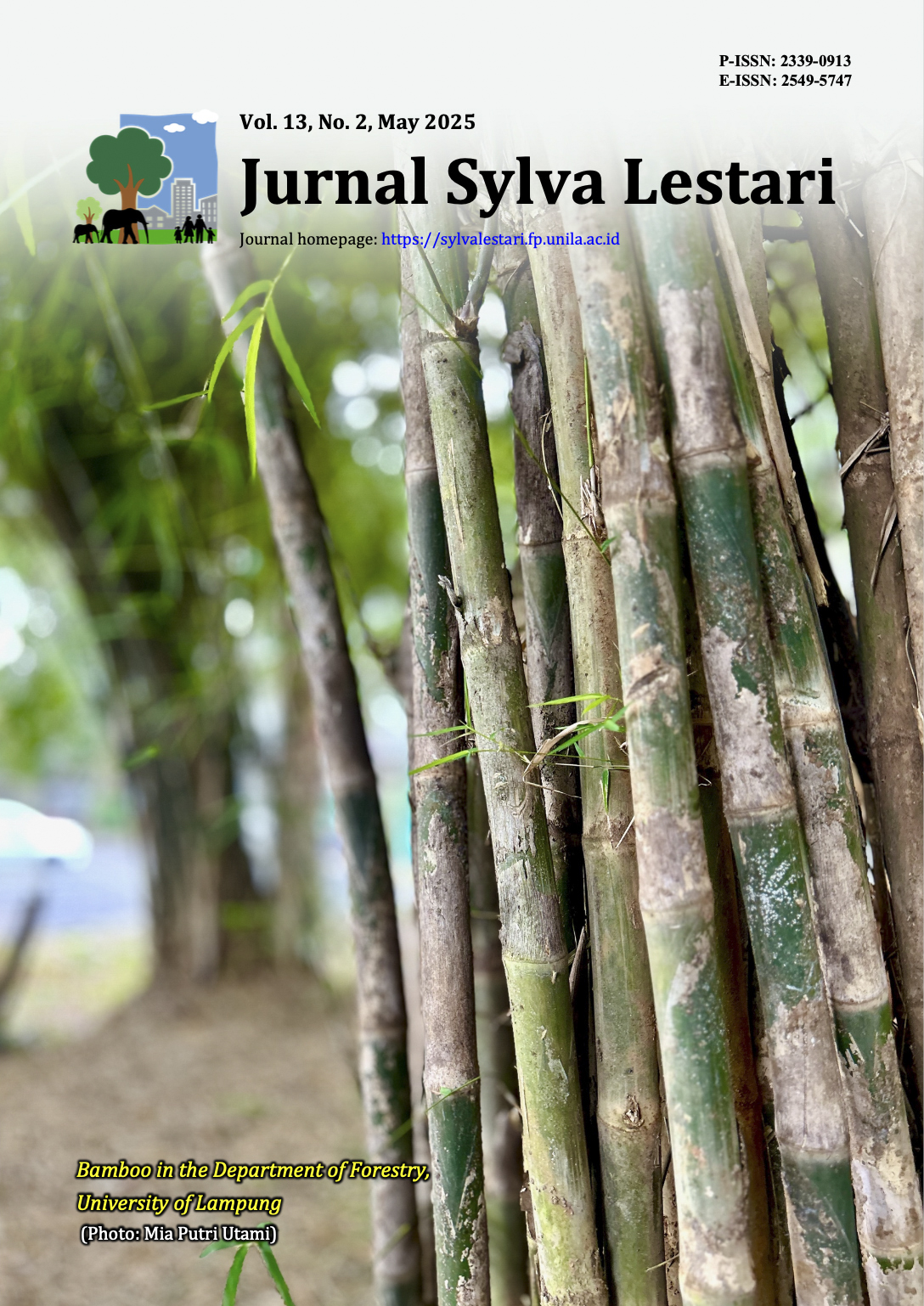Spatiotemporal Detection of Land Cover Dynamics in Forests and Food Sources in Supporting the Nusantara Capital City of Indonesia
DOI:
https://doi.org/10.23960/jsl.v13i2.1098Abstract
The relocation of Indonesia's capital from Jakarta to Nusantara in East Kalimantan Province has significantly affected land use, particularly in forests and agricultural resources. This study examines the spatiotemporal dynamics of land cover in the forestry and agricultural sectors within Kutai Kartanegara Regency of East Kalimantan Province. The goal is to support the smart forest city concept and enhance food sources within Ibu Kota Nusantara (IKN). Data related to geographical (location) and temporal (time) were analyzed using Geographic Information System (GIS) tools, enabling the mapping, overlaying, and analyzing spatial data over time. The findings show that Kutai Kartanegara has 30% forested areas and 7% agricultural land. There are eight districts with dryland forests, seven with mangrove forests, and fourteen with swamp forests. The study identifies fourteen districts nominated for dryland agriculture, nine for rice fields, and seven for aquaculture. However, forest cover in both drylands and wetlands has been declining annually. Additionally, the study pinpointed potential areas for urban forest development in Tabang District and locations for food production in Anggana, Samboja, and Muara Badak. The findings provide actionable insights for policymakers to optimize land allocation, ensuring sustainable resource management in the evolving ecosystems of the new capital.
Keywords: IKN, land cover, food source, forestry, spatiotemporal
Downloads
Downloads
Published
How to Cite
Issue
Section
Statistics
 Abstract views: 415 times
Abstract views: 415 times PDF downloaded: 402 times
PDF downloaded: 402 times
Metrics
License
Copyright (c) 2025 Kiswanto, Mardiany, Ike Anggraeni Gunawan, Annisa Nurrachmawati, Dwi Agung Pramono, Dyah Widyasasi

This work is licensed under a Creative Commons Attribution-NonCommercial 4.0 International License.
Authors retain copyright and grant the journal right of first publication with the work simultaneously licensed under a Creative Commons Attribution-NonCommercial 4.0 Licence that allows others to share the work with an acknowledgement of the work's authorship and initial publication in this journal.
Authors are able to enter into separate, additional contractual arrangements for the non-exclusive distribution of the journal's published version of the work (e.g., post it to an institutional repository or publish it in a book), with an acknowledgement of its initial publication in this journal.
Authors are permitted and encouraged to post their work online (e.g., in institutional repositories or on their website) prior to and during the submission process, as it can lead to productive exchanges, as well as earlier and greater citation of published work (See The Effect of Open Access).









